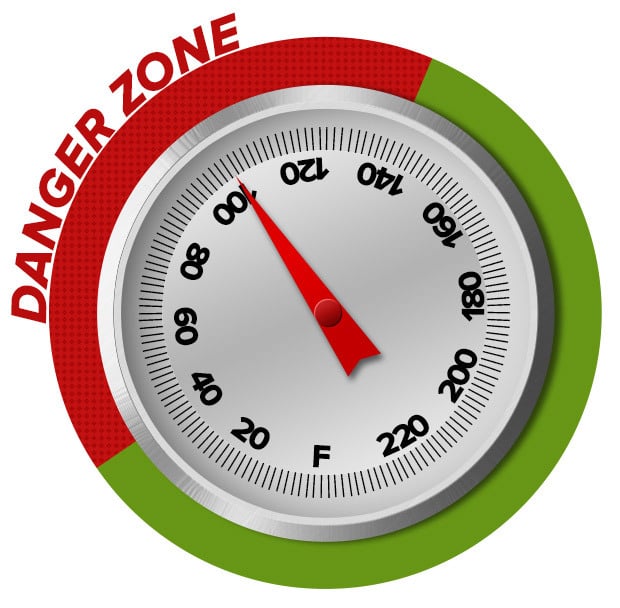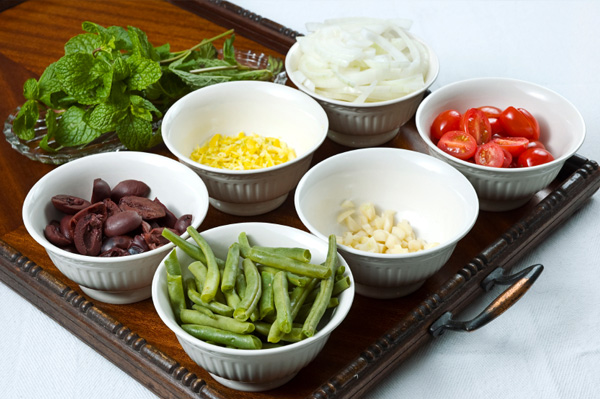(OR Take That, Dinner! Look Who’s In Charge Now?)
Happy Friday, friends! Today’s post is probably one of my favorites. You may think I’m crazy for saying so, but meal planning really can be such a fun part of managing a home!
Whether you absolutely love to cook or are learning to love it out of necessity (which I certainly feel like some days), there is a lot to be gained from doing active meal plans. I prefer to do them one week at a time, but I know some people prefer going two weeks or even a month at a time, which is just so daunting to me. Find what works for you!
Planning your meals in advance not only reduces stress, but can also save big money—reduce last-minute grocery store trips multiple times each week (decreasing opportunities for impulse purchases), plus eliminate eating out by default when there is no dinner strategy, which really adds up!
Let’s get started! First think about what your best method of planning will be. Good old pen & paper? A dry-erase calendar on the fridge? Sticky notes? Or something digital like a Google calendar or meal planning app, perhaps? For us, handwritten planning works best. Bottom line: choose what you’ll use.
Now grab a notepad and pen for some brainstorming! The first task is to make a list of easy, no-brainer meals that can be slotted in any night—think classic dishes and quick family favorites. Our Any-Night Meals list includes: spaghetti, breakfast for dinner, italian chicken (chicken breasts baked in Italian dressing), my family’s Cheesy Chicken Casserole, DIY personal pizzas, etc. Once you’ve got a handful of ideas jotted down, set the list aside.
Whether you’re using pen & paper or a digital method, start by looking at your timeframe as a whole (one week, for ex). I recommend using a combination meal planning & grocery list so you have it all side-by-side. There are tons of these available online as simple or complex as you like, but here's the one I made/use (free, just click to snag it!):
Now, let's make weekly meals a breeze in 8 easy-peasy steps!
- Gather your favorite recipe resources. Whether you prefer grandma’s card box, online recipe storage, magazine clippings, or a stack of reliable cookbooks, be sure to keep your resources close at hand.
- Determine which meals need to be planned. I only plan dinners as we usually eat leftovers or sandwiches for lunch, but if your family needs more structure than just a dinner plan, account for other meals too.
- Look at your schedule & mark out “No-Plan Meals”. Do you occasionally work during the evening, attend a weekly church dinner, or have plans to eat out with friends? It helps to eliminate those meals right away. (Plus, actively planning to eat out rather than doing so as a default makes it more special!)
- Note time-restricted meals. Are you working late or have lots of errands which will restrict cooking time? Refer to your pre-made Any-Night Meals list and add in a something you can prepare quickly.
- Try something new! Find an unknown recipe that catches your eye and write it down for your least-busy day of the week. I try to test 1-2 new recipes each week, which is challenging but fun.
- Avoid the chicken rut. It’s easy to accidentally end up eating a different type of chicken every night, which is neither healthy nor interesting. Try to balance the week with at least one beef/pork, one chicken, one fish, and one vegetarian meal. Doing so easily introduces lots of variety. (If you don’t eat meat, nevermind.)
- Account for sides. Once you’ve made a plan for your main item, make notes about what sides will accompany it, no matter how simple...starches, fruits, and veggies are limitless in variety. If the main item is more challenging, stick to something simple like steamed veggies, applesauce, or baked potatoes. If the meat dish is easy-peasy, try something more exciting for a side, like baked zucchini fries—yum!
- Make a grocery list as you go. As you plan each meal/recipe on one side of the sheet, create your shopping list on the other so you know you’ll have everything you need for every meal. Just make sure to segment the list if you have must-purchase-later items. For example: If I am serving a fresh fish dish on Friday, I certainly don’t want to buy the fish on Monday. Instead I will circle it and note which day I need to pick it up. This later-in-the-week grocery stop takes 10 minutes and guarantees quality fish or meat.
- Add weekly staples. Now that the meals are planned and their groceries are accounted for, add your family’s
weekly must-haves such as lunch meat, cereal, eggs, milk, orange juice. While you’re checking the fridge and
pantry to see if staples are needed, clear out anything past date—call it Weekly Mold Prevention.
- Do a walk-through. Stop by each room to look for additional household items that need to be added to the
- Do a walk-through. Stop by each room to look for additional household items that need to be added to the
shopping list: toilet paper, shampoo, cleaning products, paper towels, aluminum foil, etc.
 - Mind the food danger zone: 40°F–140°F. Use a meat thermometer to ensure all cooked meat reaches or exceeds 140F. Additionally, make the minimal investment in fridge thermometers to always know your food is being stored at safe temperatures (40°F in the fridge, 0°F in the freezer).
- Mind the food danger zone: 40°F–140°F. Use a meat thermometer to ensure all cooked meat reaches or exceeds 140F. Additionally, make the minimal investment in fridge thermometers to always know your food is being stored at safe temperatures (40°F in the fridge, 0°F in the freezer).
You now have a complete plan of action for the week’s meals, plus a ready-to-go grocery list! The whole exercise takes me about 15 min/week and results in stress-free execution of tasty meals every night. This week for us:
The final, albeit important, aspect of meal planning is the execution! Once you have a meal planned out and the fridge and pantry are stocked, how do you get from planning to a meal on the table? The good news is that that part is easier than you may think as well!
Here are a few helpful hints to ensure safe, stress-less meal preparation:
 - Mind the food danger zone: 40°F–140°F. Use a meat thermometer to ensure all cooked meat reaches or exceeds 140F. Additionally, make the minimal investment in fridge thermometers to always know your food is being stored at safe temperatures (40°F in the fridge, 0°F in the freezer).
- Mind the food danger zone: 40°F–140°F. Use a meat thermometer to ensure all cooked meat reaches or exceeds 140F. Additionally, make the minimal investment in fridge thermometers to always know your food is being stored at safe temperatures (40°F in the fridge, 0°F in the freezer).
- Avoid cross-contamination: Be careful to keep thawing meat contained and to use separate cutting boards and knives for meat and veggies. It’s very easy today to develop safe food handling habits; if neglectful, you may bitterly regret it. I recently bought an inexpensive bright red cutting board and labeled it for meat only, which has proven helpful. Disinfectant wipes are inexpensive and easy to use...the perfect soulmate for kitchen surfaces!
- Follow the French: Have you ever noticed how tv chefs have little prep bowls of all their ingredients pre-measured and pre-chopped? This practice is called mise en place (French for “putting in place”) and is used in commercial kitchens around the world. Adopting this practice at home makes meal preparation so much easier. Read through the entire recipe first, gather and prep ingredients as able, then proceed with ease.
 |
| source |
- Foil & Freeze: Even without owning a deep freezer, I’ve only recently begun to truly appreciate and utilize freezer space. So much surplus food can be saved when frozen. Use double layers of plastic wrap, airtight baggies, and labeled aluminum foil to tightly seal all frozen foods, from fruit for smoothies to pre-portioned meat cuts. Just make sure to keep an eye on long-term storage.
- Use common sense: I recently read online a suggestion for cutting onions under a stream of running water to eliminate tears. For obvious safety reasons, I wouldn't recommend handling a peeled onion and a sharp knife under running water. If you are unsure of how to use certain kitchen equipment or how to prepare a certain food item, take the time to look it up first. (And if onions really both you like they do me, wear swim goggles - no kidding.)
For more kitchen and meal prep tips, check out my Kitchen Management board on Pinterest.
Both Pinterest and AllRecipes.com are both great resources for new recipes too!
In addition, my most beloved cookbooks over the last couple years for manageable and delicious meals include:
Both Pinterest and AllRecipes.com are both great resources for new recipes too!
In addition, my most beloved cookbooks over the last couple years for manageable and delicious meals include:
Join me next week to make grocery shopping easier than ever while also creating safe, organized food storage!





I love meal planing it makes things much easier!
ReplyDeleteI SO agree, Diana! It's a constant learning process for me and of course, sometimes the plans change at the last minute, but it really does help simplify our life and home routines.
Delete